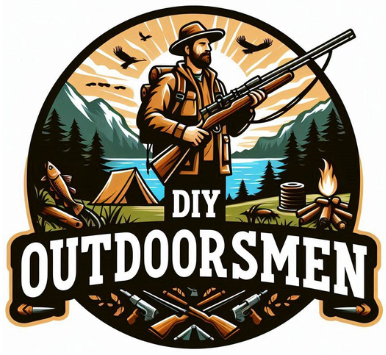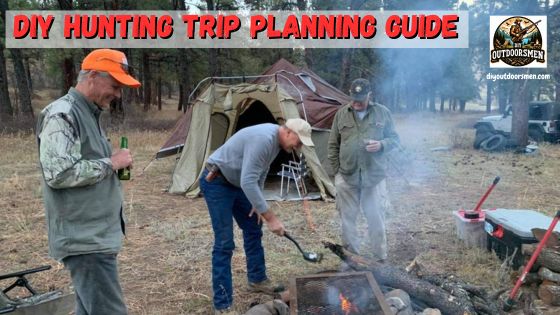Contents
A DIY hunting trip requires careful planning and preparation. It’s an experience that not only challenges your skills but also gives you a sense of accomplishment as a hunter. The goal of this DIY hunt planner and guide is to lay out the steps you need to organize a successful hunt from start to finish.
Let’s walk you through each critical stage, from assessing and refining your skills to selecting the right gear, scouting your hunting location, and understanding what’s required of you in the wild. With these considerations in mind, let’s get you started on the path to planning your DIY hunting adventure.
Remember, it’s about connecting with nature, testing your limits, and ultimately enjoying the rewards of your hard work and preparation. The first step is to make an honest evaluation of your hunting, camping, and survival skills.
Evaluating Your Hunting Experience and Skills
It’s crucial to be honest with yourself about your current hunting abilities, and skills before you set out on any trip. Assessing your skill level not only helps ensure a successful hunt but also keeps you safe. If you’re less experienced, consider guided trips or tagging along with a group of more experienced hunters.
Understanding your limits and strengths allows you to plan a hunt that’s safe enjoyable and still challenging. For instance, bow hunting requires different skills than rifle hunting. Spike camping is considerably more challenging than setting up a group base camp.
There are plenty of resources available if you are looking to enhance your skills. You can look into local hunting clubs, online tutorials, YouTube, or even state-offered hunter education programs. Having a clear picture of where you stand skill-wise will direct everything from your equipment choices, where you plan to hunt, and where and how you choose to set up camp.
Scouting and Understanding the Hunting Ground
Preparation is paramount when planning a do-it-yourself hunting trip. Scouting your intended hunting area well before the season starts can make a significant difference. It’s not just about pinpointing a random spot on a map; it’s about knowing the terrain like the back of your hand.
Start with online resources like satellite imagery and topographical maps to get a first look at the landscape. Pay attention to key features like water sources, open fields, and dense woods, which impact animal behavior. Then, if possible, physically scout those areas in person to validate your observations and get a feel for the reality on the ground.
Look for game signs. Tracks, droppings, and bedding areas offer clues about where and when animals frequent. Recording these observations can help you identify travel patterns and optimal stand locations.
Equally important is the need to respect the hunting ground. This respect is shown by understanding the boundaries of permitted areas, not disturbing the environment, and being aware of other hunters’ presence and private property boundaries. Conservation efforts, such as not damaging vegetation or polluting water sources, help ensure the sustainability of the wildlife populations and their habitats.
Selecting Appropriate Gear and Equipment
In the world of DIY hunting, the right equipment can make or break your experience. You don’t want to be caught unprepared in the wild. Consider this your essential gear list for safety and success. Suiting up with the right attire is crucial; it’s your first layer of protection against the elements and helps with camouflage.
Match your gear to the environment. Are you heading into a rainforest or a desert? Gear up accordingly to ensure comfort and increase your hunting efficiency. This means things like moisture-wicking garments for humid climates or insulated layers for colder areas, and a good pair of comfortable boots to keep your feet dry, warm, and blister-free.
A checklist is key to cover all bases – weapons, ammunition, food, clothing, shelter, navigation tools, and a first-aid kit. But it isn’t just about packing; it’s about choosing high-quality items within your budget.
Research is vital here. Look for reviews, compare prices, and be mindful not to overspend on unnecessary gadgets. Stick with trusted brands that are known for durability.
If you can, try to get your hands on the equipment to see it firsthand. If not, be sure to shop at online retailers that have a return policy so if it’s not a good fit for you, you can send it back.

Once your gear is sorted, let’s now talk about your navigation and survival skills. DIY hunting will require you to be able to find your way in and out of your selected hunting area, and be able to survive until help arrives if you find yourself in an emergency.
A successful hunt isn’t just about where you go; it’s about ensuring you can navigate that terrain safely and handle unexpected challenges. Before you set foot in the wilderness, take the time to sharpen your navigation and survival skills.
First up, navigation: Understanding how to read topographic maps and use a compass is crucial. Regular practice in a local park or a wilderness area can build these essential skills. Even with technological aids like GPS systems, knowing the basics can save you if technology fails. Note: Always carry spare batteries for your tech tools.
Survival skills are equally important. Know the basics: how to build a shelter, start a fire without matches, find and purify water, first aid, and recognize signs of hypothermia. These skills could be lifesavers if you find yourself in a bind.
Consider enrolling in a survival training course or a local outdoor skills workshop. These often provide hands-on experience in a controlled environment, allowing you to build confidence before you’re in a potentially high-stakes situation.
Hopefully, you will never need them, but having these skills not only prepares you for emergencies but also helps when planning and executing your hunt. You’ll confidently create a plan knowing you’re equipped to face the challenges of the great outdoors.
Your DIY Hunt Planner and Executing the Hunt
You’ve reached the point where your preparations converge with action. Your itinerary serves as your game plan but remains flexible enough to accommodate the unpredictable nature of a hunt. Take a moment to review your hunting regulations and safety preparations one last time.
Keep your impact on the environment minimal and follow legal and ethical hunting practices. Remember, success isn’t just measured by the game you harvest, but also by the respect you show for nature and the law.
Ensure that you comply with all local rules and regulations. Take care to tag your harvest correctly, if required, and report your hunt according to local guidelines. Finally, after the hunt, take time to reflect on your experiences.
Manage your game with care, processing the meat properly or arranging for professional taxidermy, as needed. Reflecting on your successes and learning from any mistakes ensures continuous improvement for future excursions.
Make note of any changes you need to make, and share your experience with fellow hunters, contributing to the collective knowledge, safety, and success of the hunting community. Above all, enjoy the personal growth and memories you’ve gained from a well-planned DIY hunting experience.
As always, stay safe, enjoy the journey and please try to leave it cleaner than you found it. If you have any comments, questions, ideas, or suggestions please leave them in the comment section below and I’ll get back to you ASAP. You can follow us on YouTube: Man Art Creations for videos of our DIY Adventures.
P.S. – Thanks so much for checking out our blog we really appreciate it. Just so you know, we may receive a commission if you click on some of the links that appear on our site. This helps us keep our content free and up-to-date for everyone. We appreciate your support!


